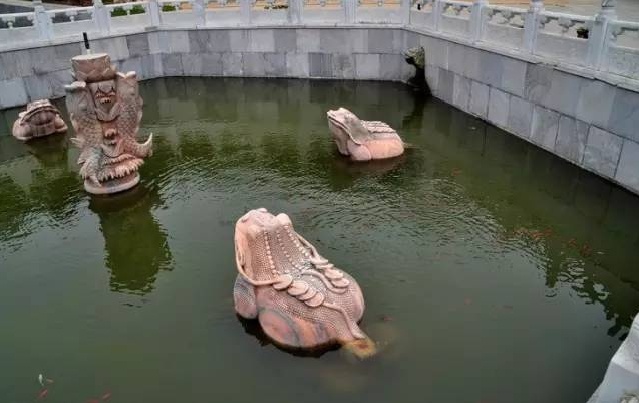The heart of most people entering the temple is vast When you enter the door, you will worship the Buddha But it doesn't make sense This article is a simple sort for you Temples and temples
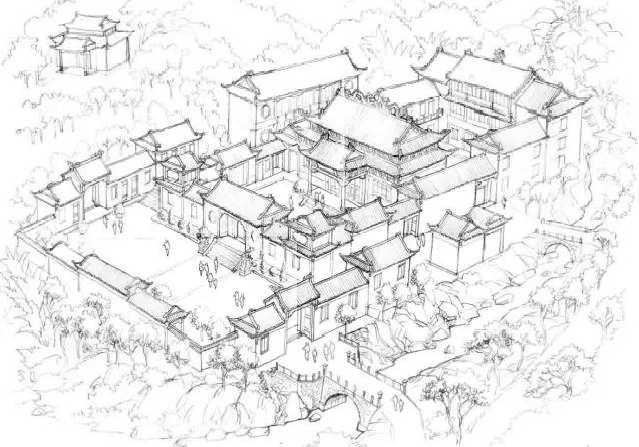
The heart of most people entering the temple is vast
When you enter the door, you will worship the Buddha
But it doesn't make sense
This article is a simple sort for you
Temples and temples
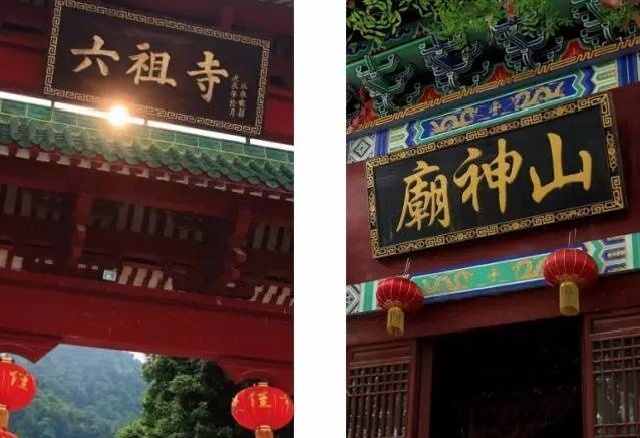
First of all, we should make clear the concept of temple and temple. The difference between temple and temple is very strict in China. Those who worship Buddha and Bodhisattva are temples, while those who worship ghosts and gods are temples.
Shanmen
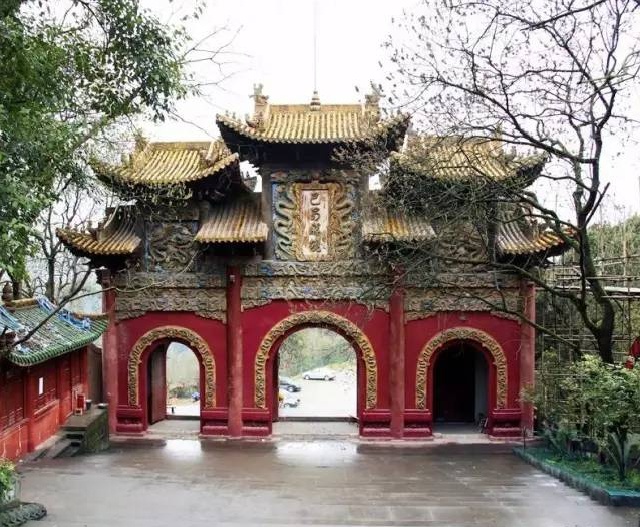
Buddhist temples are usually built on mountains, so the outer gate of the temple is called "Mountain Gate", and the right is called "three gates", which are generally composed of three parallel gates. There is a gate in the middle and a small gate on each side. The middle gate is empty, the east gate is Wuxiang gate, and the west gate is Wuzuo gate.
Shanmen Hall
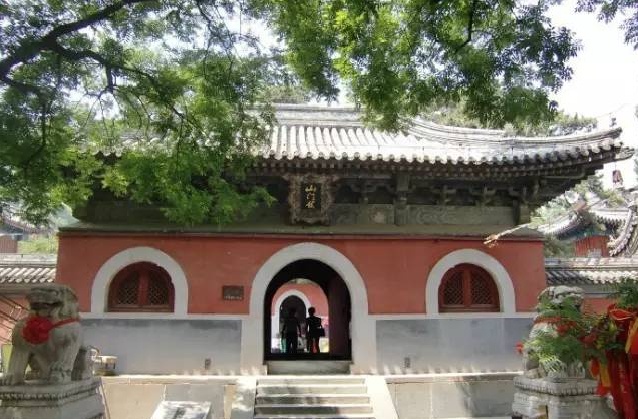
Many monasteries build the mountain gate into a hall, at least the middle gate is called "Mountain Gate hall".
Bell tower, Drum Tower

Behind the Jinshan gate, there are bells and drums on the second floor. Generally, the bell is rung in the early morning, with the drum opposite, and the drum in the evening, with the clock opposite. The bell tower is hung with Hongzhong, and the temple bell is dedicated to the Bodhisattva of Tibet. Daoming is his left flank servant, and min Gong is his right flank servant. The drum tower has a big drum, and some temples have Guan Yu, the God of Jialan. Guan Ping is his left flank servant, and Zhou Cang is his right flank servant.
Tianwang Hall
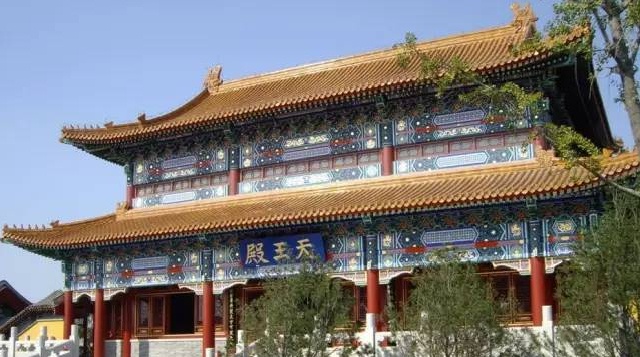
The larger Buddhist temples all have the heavenly king hall. After entering the mountain gate, the bell tower, Drum Tower on both sides and the heavenly king hall in the middle constitute the first courtyard of the temple. There are three important elements in the temple of heavenly kings: Maitreya Buddha, four heavenly kings and Bodhisattva Weituo.
main hall
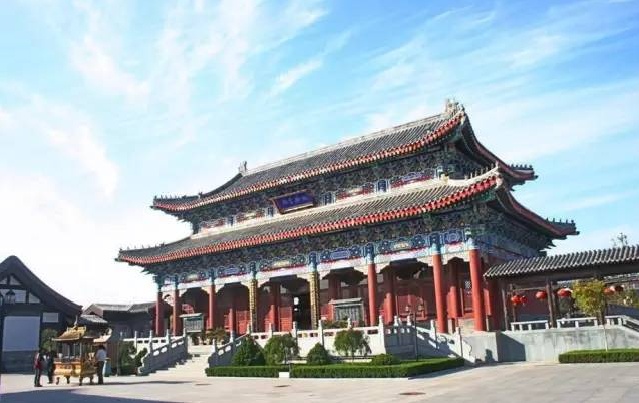
In Buddhist temples, the main hall is the main hall, also known as the main hall. The main hall is the core building of the whole temple, and it is also the place where the monks practice intensively.
There is a big tripod in the middle of the front courtyard of the main hall, usually engraved with the name of the temple. In the north there is a large incense burner burning incense for Buddha. There are a pair of flagpoles in front of the hall, a flag bucket on the top of each flagpole, and a pair of carved dragon pillars or a pair of exquisite towers on some flagpoles. In front of the Buddha statues in the hall, there are many Sutra flags, joyful doors and various magic weapons, which make the main hall solemn and respectful.
The statue of Sakyamuni Buddha is worshipped in the main hall“ "Daxiong" is the name of Buddha“ "Big" means everything“ "Male" means to subdue the demons. Because Sakyamuni Buddha has the wisdom of full realization and can be powerful in the world, so his disciples respectfully call him "Mahatma". The "treasure" in the hall refers to the three treasures of Buddhism and Buddhism.
Generally, the hall is divided into three rooms, while the main hall is divided into nine five rooms, which symbolizes the "Nine Five" of the emperor. There are one, three, five and seven statues dedicated to Sakyamuni.
East west side hall
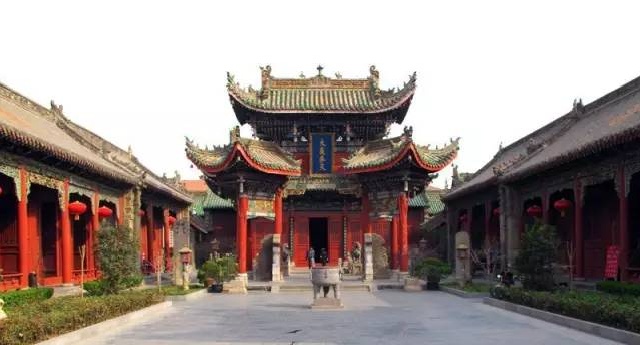
The larger Buddhist temple has East and West halls on both sides of the main hall.
In the East is Qi é) In the blue hall, there are three statues: King persini (middle), Prince Diduo (left), and for the lonely elders (right).
Both sides are often supplied with Qi é) Blue god guards the temple;
(Kalan is the abbreviation of sanghalammo. It means "monk garden". Jialan here refers to "only trees are given to lonely garden", which is the place where Shijia lived in Shewei kingdom.)
In the west is the hall of the patriarch, dedicated to the founder and outstanding achievements of the patriarch.
In the middle is Dharma Zen master, the forefather of Zen
On the left is Zen master Huineng, the sixth patriarch of the Tang Dynasty
On the right is Chan Master Baizhang Huaihai, Huineng's three disciples who established the jungle system.
In temples of other sects, there are also statues of their ancestors in the ancestral hall.
Four halls
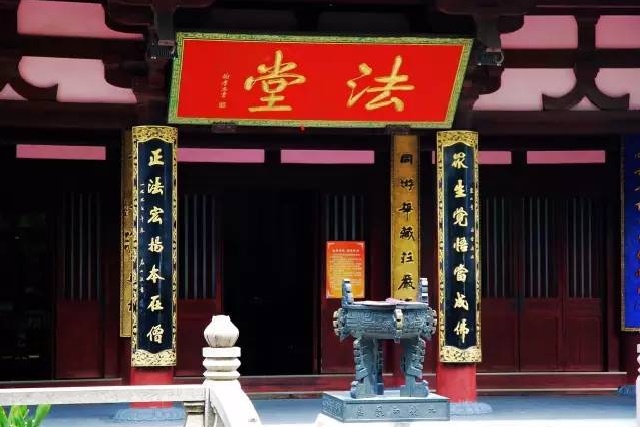
The four halls are the Dharma hall, the hall of the Zhao, the scripture hall and the lecture hall. Some of the large jungle will have FA Tang and photo hall, which will be placed behind the hall of Mahatma.
① . French Hall:
A place where Dharma is addressed to Zen. Buddha statues in Dharma hall are no longer the main body. Many Buddhist temples do not have lecture halls, and they usually read Scriptures or hold Buddhist ceremonies in the hall of Daxiong.
A table is set in the center of the hall, a table (podium) and a legal seat are set at the bottom of the table. On both sides, there is a listening table. There is a big screen behind the Dharma, and there is often a lion roar. A because Buddhism often compares it with the Buddha as lion roar.
② Photo Hall:
After the FA Tang, the two halls are actually two parts of a building, the former is the FA Tang and the latter is the hall of illumination. If there are many things in the temple, the first one at the next level will be responsible for the saying. Therefore, it is not in the hall of monks (FA Tang) but in the hall of Zhao, so try to take a seat. After the monk hall, the light is not very good. Therefore, it is named "Zhao Tang", hoping that the sunshine (Buddha light) will be widely lit. It is also the first place for temple managers to publish information and deal with affairs to monks.
③ Lecture hall:
It is also located behind the hall of Mahatma. The lecture hall is also a place to speak about Buddhist scriptures. If there is no law hall in small and medium-sized temples, the lecture hall will be used instead of the Dharma hall. If there is a Dharma hall, the lecture hall is placed in the van rooms on both sides of the Dharma hall, or arranged in the two courtyard between the Buddha Hall and the Dharma hall. Temples are the places where Buddhist scriptures, sutras are taught and converted to the precepts of power.
④ Jingtang:
For hiding (z à NG) the hall of Scripture and the place where monks study scriptures. It and Tibet (z à NG) different buildings. Tibetan (z) à NG) Jinglou is a temple library for storage (c á NG) all books in the temple. Tibetan (z) à NG) special storage (c) for the building á NG) the Buddhist classics, the Huayan Scripture, said: "self attribution to law, willing to be with all living beings; Deep experience (z à NG), wisdom is like the sea. Han style "Jingtang" and "Zang" (z à The "great scripture hall" of NG) style is also different.
Four sets
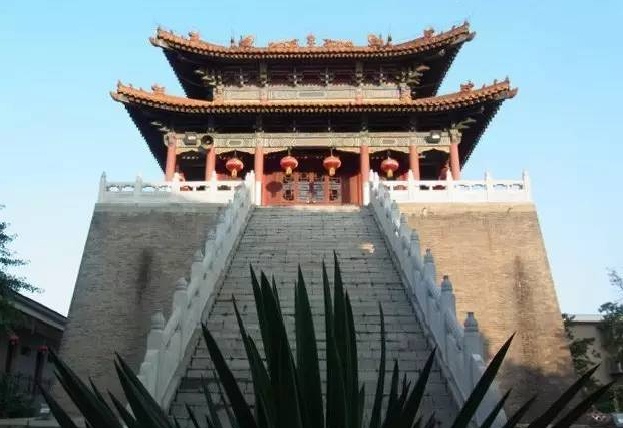
The four platforms are Yuetai, Baitai, Gaotai and Jietai. They are all high platforms. The four stations have different names and functions. Generally, only one kind of temple can be built, and it also has several other functions.
① In ancient India, it was called "Mandala", which was translated into "altar" in Chinese. The altar was built at a higher position in the temple, and the platform was also higher, which was a place for monks to receive precepts. The altar of Han style temple is built in the open space of the temple. All the monasteries of Zen and Legalism have set up a stone tablet in front of the altar, which reads "forbidding meat and wine to enter the Mountain Gate", which is called "the altar stone".
② Music platform and worship platform: music platform is commonly known as "platform", and some send Buddhism sect is also known as "worship platform", which is used to play Buddhist music when religious ceremony is held in front of the Buddha in the temple. Generally built in front of the main hall, its height and the main hall of xumizuo level. The bay is generally three to five, and the shape is square. There is a step on the front. There are two steps on both sides of the ancient temple.
③ High platform: the platform is built in the independent place of the temple, which is usually built in zhanger. The house or a group of temples built on the stage are extremely noble places in the temple. It is mainly used to worship the main Buddha statues in the temple, such as Haibao temple in Yinchuan and Baima temple in Luoyang. Tang Xuanzang once translated Buddhist scriptures from India in the high platform of Baima temple.
Luohan Hall
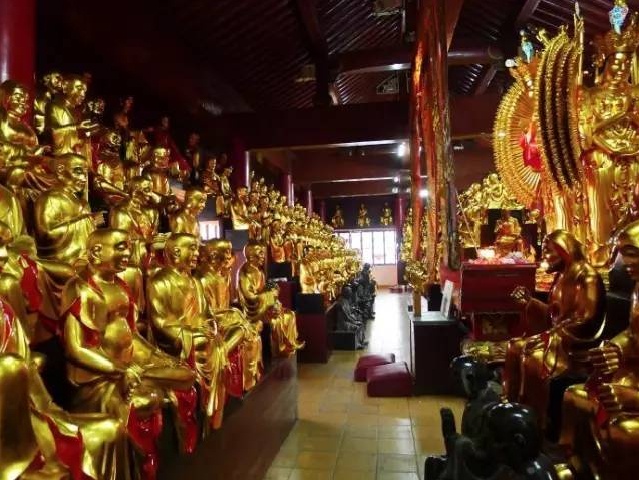
Rohan is a disciple of Sakyamuni and a male monk. It is also known as arhat, which means "killing thieves" and "not being born". It is a wise person who should be polite. Some Buddhist temples have arhat halls, while others have separate arhat halls.
There are many kinds of Arhats worshipped in Temples: the most common are eighteen Arhats, sixteen Arhats and five hundred Arhats. Only large-scale temples are built, which is often the most colorful part of the temple, such as Xiyuan temple in Suzhou, Biyun temple in Xishan in Beijing, Baoguang temple in Chengdu, Sichuan, Longhua Temple in Shanghai, Guiyuan temple in Wuhan, Qiongzhu temple in Kunming, etc.
Five hundred Arhats usually refer to the five hundred Arhats of the great bhikkhs who are often enlightened by the Buddha in the world, or the five hundred Arhats who gather Buddhist classics after the Buddha's nirvana. In ancient India, "five hundred" and "eighty-four thousand" were used to describe many meanings, which is very similar to the Chinese ancients who used "three" or "Nine" to express most of them. Therefore, "five hundred Arhats" is not necessarily five hundred, and their names are not clear.
Because the number, names and statues of Arhats are not based on the classical rituals, the number, scale and figures of Arhats in temples may be different.
Meditation Room
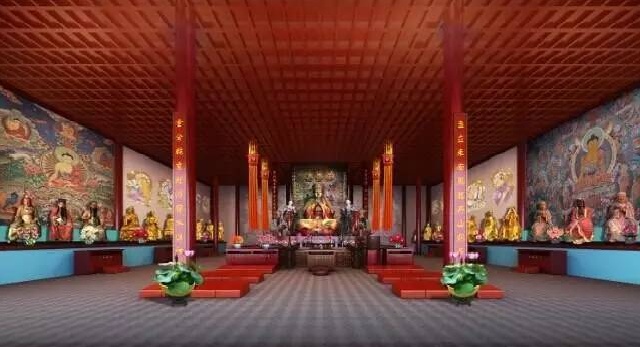
Also known as Zen house, Zen house, Zen hall. Zen temple is aimed at "Zen Na"“ Zen Na means thinking or meditation, which means that we need to think quietly about problems. This requires a place to live quietly, which leads to Zen room. Zen rooms are usually located at the back of the temple or near the Abbot's room, where Zen practitioners live.
Jianyuan, fangzhangyuan
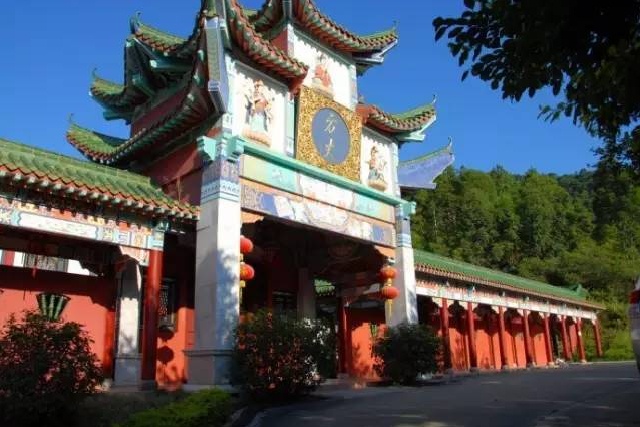
The prison is the general manager of the temple, second only to the abbot. The difference between the two in the early temples lies in: the abbot was a monk with high morality and profound knowledge, and the spiritual leader of the temple; The prison is the chief executive of the temple and the actual manager of the temple. After the Tang Dynasty, the selection of the prison often emphasized the monks who had knowledge, understood Buddhism and could handle affairs seriously. The responsibilities of the prison and the abbot began to be confused.
The Abbot's courtyard is the main dormitory of the prison or abbot. Generally, a separate house or courtyard is built at the back of the temple as the residence of the abbot. In ancient times, the stone chamber of vimo was square, with a length of one Zhang and a width of one Zhang, so it was called "Abbot". Later, although the Abbot's room was the residence of the abbot of the temple, it was not luxurious and the area was not large. Later, the warden or abbot often dealt with official business in the old houses of the temple. Some small temples did not set up the abbot, but used the side and cross temples in the temple as the resting place for the warden and abbot.
Dazhai Hall
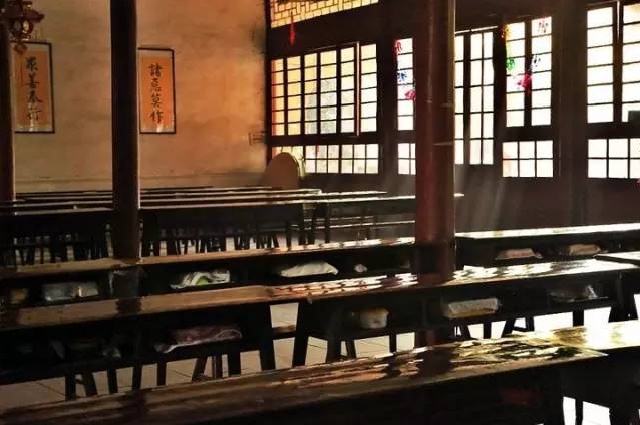
Sutra Library

Stele tower, stele Pavilion and Pavilion
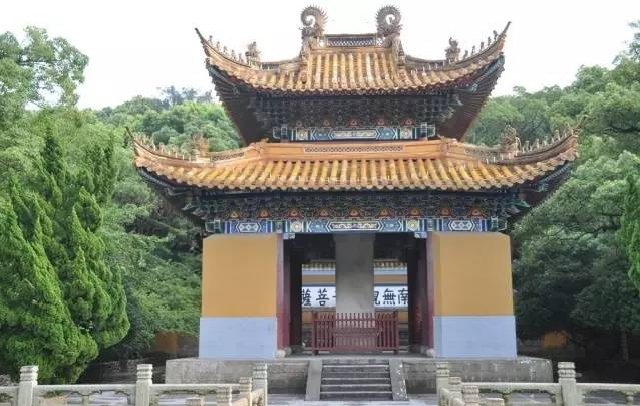
The stele tower is a pavilion built by the temple to place large steles. Its function is to prevent the steles from weathering and damage due to the sun and rain. The shape is mostly square, open on all sides, and enlarge the stele at the middle end. The top of the stele tower is of Xieshan style with double eaves, similar to that of the bell and Drum Tower. The stele tower is generally built on both sides of the courtyard in front of the main hall, with a number of one, two and three pairs. In order not to hinder the solemn atmosphere of the main hall, some temples do not build stele towers in front, but build stele corridors on both sides of the front. Its function is the same as that of stele tower.
There are three types of inscriptions
The first is to introduce the history of the temple, including the time of its initial construction and reconstruction, the cultivation, sightseeing and ode of eminent monks, officials and scholars;
Second, the system of publishing and publicizing the court;
The third is to announce the names and the amount of money given by the four believers in the construction or reconstruction of the temple.
Some temples also have picture steles to record the plan of the temple.
Some thousand year old temples also gather the stone tablets of the past dynasties, including those in the abandoned temples, to form a forest of steles.
All the great temples and famous temples often invite famous masters and calligraphers to write inscriptions. His inscriptions have become famous works of literature and calligraphy.
Some temples do not build stele towers or corridors, but build stele pavilions, which have the same functions as stele towers and corridors. The shape is also mostly square, built on the platform, surrounded by four columns, no door, the middle end of the enlarged monument. The stele Pavilion is generally built on both sides of the front or back yard of the temple, one on the left and one on the right. There are also four temples built in the four corners. The pavilion is generally painted red with glazed tiles on the top. For example, if the imperial stele is given by the emperor, only a tall stele Pavilion will be built and placed on the central axis. The imperial power is supreme even in temples that advocate Buddhist equality.
Pavilions are for pilgrims and visitors to rest. They are not only square in shape, but also hexagonal and octagonal in shape. It is usually built on both sides of the front or back yard.
Gallery courtyard and group room
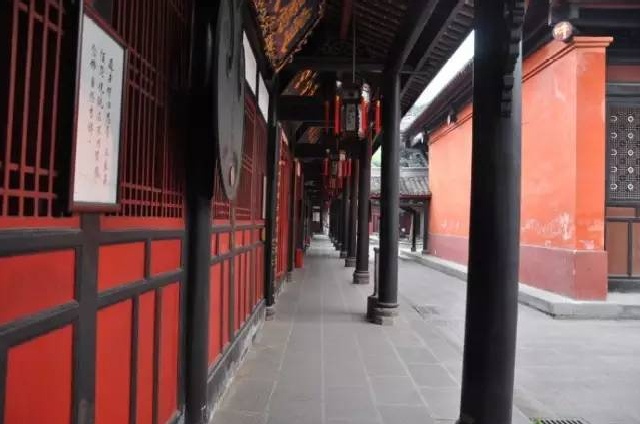
Gallery: it is a courtyard composed of cloisters. It was first used in houses and palaces, and later used in temple buildings. There are basically four types: the first type is the peripheral corridor type, which is surrounded by corridors on all sides, and the main buildings are arranged in a group of buildings in front of and behind or left and right, which is the most common form, especially in the temples of the Tang Dynasty; The second is the broken corridor type. There are houses on all sides. The four sides of the houses are connected by corridors at the corners, and the quadrangle houses in Beijing and northeast mostly use this way; Third, the corridor style. It is similar to that of the broken corridor. The difference is that there are walls on both sides of the corridor, and the corridor can't be seen from the outside. There are no walls on both sides of the corridor. Pilgrims, tourists and monks can see the scenery outside the corridor. Corridors are common in temples. The fourth is the corridor connection between the two halls. This kind of hall is also called I-shaped hall.
Group houses: in the temple, the main buildings such as the Tianwang hall and the Daxiong hall are built on the central axis, while the living and working houses for monks are built around the courtyard, either single or in rows, which are called group houses. Group rooms are mainly used as guest rooms to receive visitors. In addition, it also serves as an office, a conference hall and so on. Some temples also use group rooms as Dharma hall, Buddha Hall and historical relics exhibition room. Small monasteries are also used as refuges, monasteries, etc.
pond where fish are released
